Activity Level: Average
Hypoallergenic: No
Social Ability: Highly Social
Skills: Cattle-Driving, Pulling, Guarding
Intelligence: Average
Ideal Climate: Temperate
The American Bulldog, English Bulldog, and French Bulldog are collectively known as Bulldogs. The classic “sour mug” of a Bully may look grumpy, but these dogs are friendly snuggle-bugs at heart. Bred for their strength and abilities, Bulldogs have been a favorite across Europe and the US for centuries.
Breed Overview
 Origin: Under the reign of King John in 13th century England, the sport of bullbaiting was incredibly popular, leading to a generalized desire for stronger fighting canines. Ancestors of the Bulldog and other breeds like it were utilized in this antiquated practice, preferred for their intimidating stature and immense strength. Centuries later in 1835, bullbaiting took the backseat as dogfighting became a widely practiced sport. Breeds including Pit Bulls, Bulldogs, and Mastiffs almost exclusively filled roles in sporting and fighting events, with the occasional farming or herding job on the side.
Origin: Under the reign of King John in 13th century England, the sport of bullbaiting was incredibly popular, leading to a generalized desire for stronger fighting canines. Ancestors of the Bulldog and other breeds like it were utilized in this antiquated practice, preferred for their intimidating stature and immense strength. Centuries later in 1835, bullbaiting took the backseat as dogfighting became a widely practiced sport. Breeds including Pit Bulls, Bulldogs, and Mastiffs almost exclusively filled roles in sporting and fighting events, with the occasional farming or herding job on the side.
It is believed the Bulldog was brought to America as early as the 16th century, but more reliable evidence places these pups firmly in the 17th century colonial era. They were utilized on farms and ranches guarding other animals and catching wild predators. For decades, breeding practices produced Bullies with more “favorable” qualities, some leaning into their strong stature for fighting purposes, and others tending towards their loyal and intelligent nature.
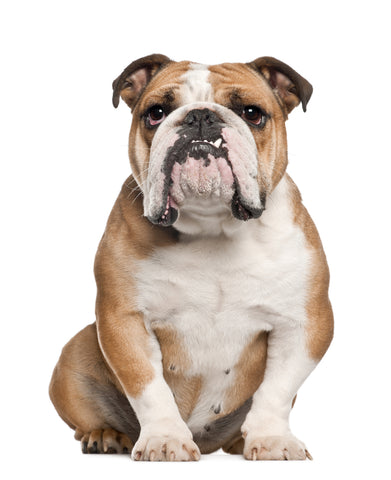 In the UK during the later 1800s, Bulldogs were almost eradicated after bullbaiting was no longer in vogue. Thanks to fortunate timing, the UK Kennel Club was founded in 1873 as the world’s first dog breeding club involved in registering purebred dogs. Once these selective breeders discovered the Bulldog, their efforts brought Bullies back into popularity. Instead of remaining a brawny brawler breed, Bulldogs became companion animals after decades of efforts to nurture their softer side.
In the UK during the later 1800s, Bulldogs were almost eradicated after bullbaiting was no longer in vogue. Thanks to fortunate timing, the UK Kennel Club was founded in 1873 as the world’s first dog breeding club involved in registering purebred dogs. Once these selective breeders discovered the Bulldog, their efforts brought Bullies back into popularity. Instead of remaining a brawny brawler breed, Bulldogs became companion animals after decades of efforts to nurture their softer side.
The breed standard now includes a particular kindness towards children and other animals, with a sweet and mellow demeanor. In 1886, the American Kennel Club officially recognized the Bulldog as a breed, beginning their journey out of the shadows of human history and into loving homes where they belong.
History: While many other breeds were utilized in military efforts during World War I, the Bulldog skirted the draft by remaining necessary on farmsteads as more and more men were drafted. Bullies lent a helping paw guarding cattle and livestock, and they stayed largely out of the public eye for while some time.
During World War II, the Bulldog was compared to the jowled face of Winston Churchill, as well as to his steadfast attitude toward rising fascism in Europe. Because of this newfound fame, the breed gained popularity, notoriety, and best of all, a grounding edge that placed them at the forefront of minds all over the world. Unlike the negative association carried by German Shepherd dogs after the war, Bulldogs gained a positive light in their story that allowed them to become the face of sports teams, brands, and many things in between. The Yale University mascot is a Bulldog named Handsome Dan, and a wrinkly Bully is now known as the face of the United States Marine Corps.
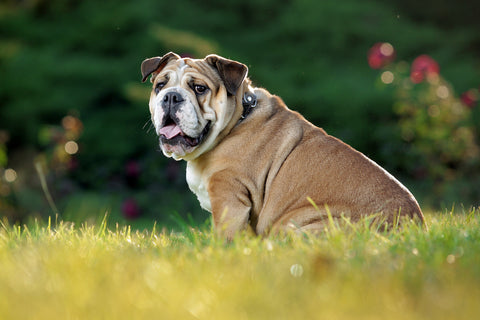 Today, the Bulldog’s image retains significantly less stigma, but there are still battles to be won. According to a statement by the American Kennel Club, the state of New York has seen a 323% rise in Bulldog abandonment in an eleven-year span. Fortunately, there are helpful humans fighting the good fight. Countless studies (including a report from Colorado 9 News stating that English Bulldogs rank 12th of 26 breeds documented for dog bites [lower on the list than Chihuahua, German Shepherd, and Labrador]), experts (including Dr. E. Kathryn Meyer, an accomplished veterinary behaviorist at the Veterinary Behavior Clinic in Gaithersburg, Maryland), and numerous organizations (including the American Kennel Club) agree that the Bulldog is not inherently aggressive. Rather, they can be trained to fight or may exhibit an instinctual defensive response that humans perceive as malicious.
Today, the Bulldog’s image retains significantly less stigma, but there are still battles to be won. According to a statement by the American Kennel Club, the state of New York has seen a 323% rise in Bulldog abandonment in an eleven-year span. Fortunately, there are helpful humans fighting the good fight. Countless studies (including a report from Colorado 9 News stating that English Bulldogs rank 12th of 26 breeds documented for dog bites [lower on the list than Chihuahua, German Shepherd, and Labrador]), experts (including Dr. E. Kathryn Meyer, an accomplished veterinary behaviorist at the Veterinary Behavior Clinic in Gaithersburg, Maryland), and numerous organizations (including the American Kennel Club) agree that the Bulldog is not inherently aggressive. Rather, they can be trained to fight or may exhibit an instinctual defensive response that humans perceive as malicious.
Bulldogs are loving, sweet canines with a loyal nature and a gentle touch, and they deserve a fair chance just like every other dog. Organizations like Rescue Bulldogs, Adoptabull, and No Borders Bulldog Rescue help rehome Bullies and spread the word about these sweet little canines.
Breed Attributes
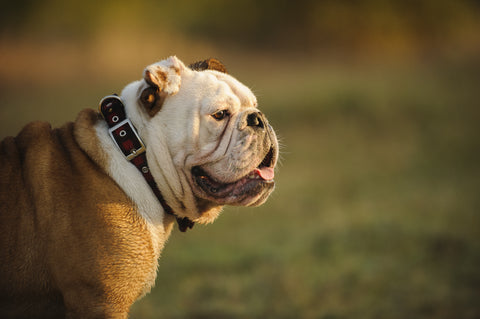 Temperament: Bulldogs are known for their bullish stature, but their temperament could not be farther from this image. Aptly nicknamed gentle giants, these canines are bulky and strong, but they do not generally exhibit aggression in a comfortable environment. In fact, the American Kennel Club Bulldog breed standard states, “The disposition should be equable and kind, resolute and courageous (not vicious or aggressive), and demeanor should be pacific and dignified.”
Temperament: Bulldogs are known for their bullish stature, but their temperament could not be farther from this image. Aptly nicknamed gentle giants, these canines are bulky and strong, but they do not generally exhibit aggression in a comfortable environment. In fact, the American Kennel Club Bulldog breed standard states, “The disposition should be equable and kind, resolute and courageous (not vicious or aggressive), and demeanor should be pacific and dignified.”
Personality: While every dog has a unique personality, Bullies are known and loved for their sweetness and gentleness. With a loving personality (and sweet eyes to match), Bulldogs are often companions and family pets, thriving in environments where they can enjoy playtime, cuddling, and quality time with their owners. These small canines are known for being great family pets as they are gentle with children and known to camp out under a busy dinner table. Thanks to their past as farm animal and cattle guardians, Bullies can often be found ‘protecting their pack’ by turning their back to their owner, a puppy, or a baby, and vigilantly watching the room. This tactic should be encouraged, as it can contribute to their comfort level by allowing them to feel in control of their surroundings.
Ideal Owner: You! Bulldogs make outstanding companions, with a loyal nature that rivals only your shadow. With a Bully by your side, you can play, cuddle, or just hang out, and they’ll have a blast with you—Just don’t forget the treats!
Fur Care
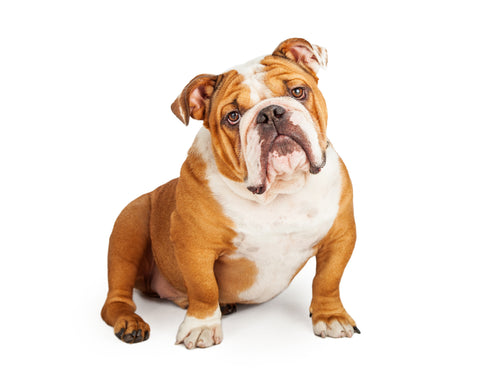
Grooming: With a soft, short coat, Bulldogs are easy to groom and only require occasional baths. However, their ears, eyes, and nose may need close-up attention on a daily or weekly basis. Due to their facial structure, sinus mucus, tears, sweat, and saliva can get trapped near the face and cause odor and infection. A gentle tear stain wipe can help keep their face clean and fresh every day, as it is quick and relatively non-invasive. Our Bulldog Tear Stain Wipes clean skin and fur as well as lift stains caused by tearing, saliva, friction, and the like.
Their short fur can be maintained with a short bristle brush, regular brushing, and occasional baths. Bullies with more skin folds and rolls may need a bath more often to keep skin clean. If your dog spends a lot of time outside, has excessive skin folding, or has recurring body odor, be sure to reach for deep-cleansing deodorizing shampoo to keep them fresh and clean.
Shedding: These canines are moderate shedders, leaving an above-average amount of loose fur in their wake. With regular grooming, brushing, and occasional baths, owners can keep their pup’s skin and fur healthy while managing shedding. For excessive shedding, veterinarians often recommend supplementation with essential fatty acids to keep skin nourished with the nutrients it needs. Omega HP Fatty Acid Skin and Coat Support soft chews are a fantastic option to boost their nutritional intake and support their skin with a tasty snack.
Health
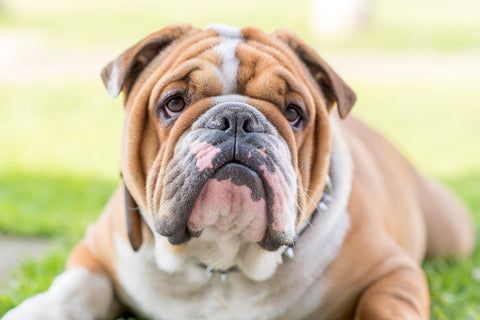
Common Issues: According to the Royal Veterinary College at the University of London, a 2022 study urges fast action regarding rampant English Bulldog health issues. These include breathing problems, hip dysplasia, and cherry eye, just to name a few painful conditions these dogs are genetically predisposed to.
Due to their shortened face and protruding lower jaw, Bulldogs have narrow nostrils, often malformed windpipes, and excessive soft nasal tissue. As you can imagine, this does not help these canines breathe and pant. Because of their hindered panting, an essential part of a dog’s temperature regulation, Bullies may experience heat sensitivity and therefore thrive in a temperate climate.
A scary-sounding condition these dogs may be prone to is called Cherry Eye, in which a gland near the eye becomes displaced. This must be evaluated by a veterinarian, so be sure to keep an eye on your pup’s eyes and look out for redness, irritation, or tearing.
Bulldog hip dysplasia is another common condition, in which joint tissue is deformed and can cause pain, discomfort, and loss of mobility. While this issue typically affects older canines, young pets can experience dysplasia as well, and the risk only increases with age. That's why many veterinarians recommend supplements with joint-supporting ingredients such as Glucosamine, Chondroitin, MSM, and Green Lipped Mussel. These compounds are naturally found in joint tissues and can more efficiently rebuild those tissues with supplementation. Check out our Z-Flex Max Hip and Joint Soft Chews for a simple option that provides joint support in a tasty chew.
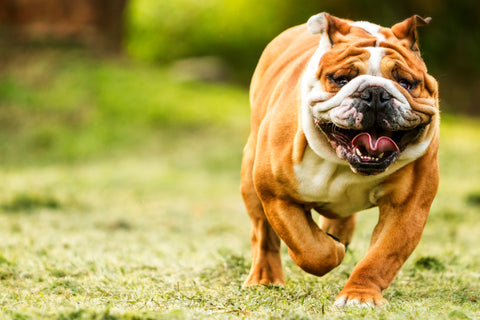 Nutrition: Similar to most breeds, Bulldogs require ample high-quality sources of protein in their diet. These can include chicken, pork, beef, and homemade fresh foods such as eggs and certain vegetables. Canines also require high levels of omega fatty acids in their diet, as they cannot synthesize these compounds internally. Unfortunately, many commercial pet foods do not contain the amount your dog may need; with a simple omega 3 supplement like our Bulldog Salmon Oil Chews, you can boost your pup’s nutritional intake and support their skin, joints, and immunity.
Nutrition: Similar to most breeds, Bulldogs require ample high-quality sources of protein in their diet. These can include chicken, pork, beef, and homemade fresh foods such as eggs and certain vegetables. Canines also require high levels of omega fatty acids in their diet, as they cannot synthesize these compounds internally. Unfortunately, many commercial pet foods do not contain the amount your dog may need; with a simple omega 3 supplement like our Bulldog Salmon Oil Chews, you can boost your pup’s nutritional intake and support their skin, joints, and immunity.
Due to their plethora of health concerns, it is generally recommended to strictly monitor a Bulldog’s nutrition to help prevent obesity from becoming an additional health issue. No matter how cute that face is, no dogs should be given table scraps. Food intended for humans may contain ingredients your dog is not accustomed to digesting, which can cause upset stomach and the like.
Lifespan: 8-10 years
Physical Activity
 Training: Bulldogs are naturally stubborn and headstrong, which gives them a whole bunch of personality, but this trait doesn’t lend itself to obedience. Early training is essential for all canine breeds, especially Bullies, but no dog is untrainable. Simple commands such as ‘sit’ or ‘stay’ are generally easy to teach with training treats, but complex commands such as ‘let go’ may require professional training.
Training: Bulldogs are naturally stubborn and headstrong, which gives them a whole bunch of personality, but this trait doesn’t lend itself to obedience. Early training is essential for all canine breeds, especially Bullies, but no dog is untrainable. Simple commands such as ‘sit’ or ‘stay’ are generally easy to teach with training treats, but complex commands such as ‘let go’ may require professional training.
Exercise: High-impact play such as disc-fetch or running may not be ideal for Bulldogs, as they are genetically predisposed to joint concerns. Due to their size and this predisposition to joint issues, Bullies need daily walks and play to stay active, as they may become sedentary without prompting. A daily walk at their pace is a great way to keep your Bully active without straining their body, and swimming is a low-impact activity that many Bullies enjoy. Their natural ability for pulling weight makes them great on a farm, but in a more modern setting, they tend to enjoy rope and tug toys to get the urge out in an appropriate way.

Bulldogs are fierce friends and playful pups who thrive with friends of all species. Welcome one into your home and join the community of Bulldog rescuers who keep these pups out of shelters! We recommend checking out some of the 400+ organizations in the US for more information, training, and resources; here are a few famous favorites: Bulldog Club of America, Rescue Bulldogs, and Club Flyer.

